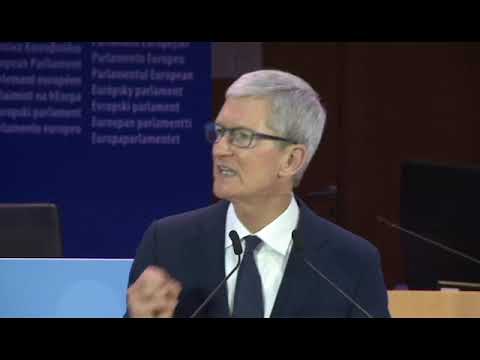Washingtonâs self-defeating foreign policy
If I were a shovel manufacturer I could make a lot of money in Washington, because Washington policymakers are digging deeper and deeper holes for the United States.
Washington is not alone: the Biden folks are getting “help” from the Europeans and Japan. But how long will that last and, in any case, what is it worth?
By now anyone who can read must realize that the best case for Ukraine is a stalemate, but the more likely case is the Kyiv regime will collapse. There are plenty of alternative scenarios but, just going on numbers, it makes little sense for Kyiv to keep playing the existential roulette wheel.
It is true that the war is putting great psychological stress on Russia. But the appearance of Valery Gerasimov, the Russian Army chief of staff, physically present leading the battle in the Zaporizhia region, where part of the Ukrainian offensive may have started, indicates the Russians are stepping up their effort not only to block the offensive but to start up one of their own.
Vladimir Putin still has to deal with many operational problems on the war front, and some at home: but so did Washington, Lincoln, Roosevelt, Truman and Eisenhower.
This is not to say that the wars those American presidents presided over are, in any way, comparable to Ukraine operationally, politically or morally. It only says that wars cause confusion and political problems.
Ukraine is more adept at psychological warfare than the Russians (see, for example, Ukraine’s latest fake Putin broadcast), and that also causes difficulty.
But probably Russia’s biggest issue is Yevgeny Prigozhin, the head of the “private” Wagner Group. Prigozhin has become an uncontrolled trouble maker and it is harming Putin as much as Prigozhin harms the Russian army.
It goes without saying that Putin has to understand this and will have to act. If Putin sits on his hands, he will lose and surely he must understand that.
The missing ingredient, so far as I can tell, is that the Russian army leadership (not Shoighu, the defense minister, who is really a non-factor) has to bring its complaints directly to Putin. That will be up to Gerasimov and probably awaits the outcome in Zaporizhia.

Assuming that the Russians despite their difficulties stay in the war and make a strong effort, Ukraine will pay a huge price in material and manpower.
In their latest operations, which stretch all along the eastern front and down to Zaporizhia, the Ukrainians are making minimal gains at a high cost. They are attacking in many sectors at one time, but so far are not gaining much that can be considered strategic.
The two best efforts have been a counter-offensive on the flanks of Bakhmut, aimed at Soledar, and the attack in the Zaporizhia direction – so far involving three settlements, which the Ukrainians may be able to hold for a short time.
At least in Zaporizhia the Ukrainians are using two reserve brigades, the 23rd Mechanized and the 31st Mechanized. These brigades were stood up only this past February, but they are being supported by numerous battle-tested units. There are reports that in the Novodonetsk settlement the Ukrainians have used Bradley fighting vehicles and other Western equipment possibly including Leopard tanks.
In these battles the Ukrainians have so far lost 17 armored personnel carriers, 11 infantry fighting vehicles and nine tanks. They have also lost, according to the Russians, 900 men. If you add in the other fighting in eastern Ukraine, Ukrainian manpower losses on June 4 and 5 amount to 2,000 troops killed, wounded or missing.
The 23rd and 31st mechanized brigades do not have Western equipment, which means that other, more experienced units were thrown into the fighting.
The Russians have put together elaborate defenses in Zaporizhia. stretching all the way to the Kherson area. This can be interpreted to mean that the Russians have no intention of going on the offensive in these areas but, rather, intend to block the Ukrainians and extract a very high cost to them in equipment, war stocks, and manpower.
It would appear, therefore, that if the Russians decide to launch an offensive operation of their own, it will be elsewhere, probably from either Donetsk or Luhansk heading in the direction of the Dnieper River. If the Russian army should move that way, it could cut off Ukraine’s communications and supply lines to its clustered forces in the east and southerly direction, and even threaten Kyiv if it wins a number of battles on the way.
US weakened in the rest of the world
No matter what Zelensky wants, he has crippled US fighting capability in the rest of the world. That is already clear in the Middle East, where the shovelers, partly for ideological reasons, have lost their standing with Saudi Arabia and the UAE. The UAE has suspended its participation in the US-led Maritime Force in the Persian Gulf. The Saudis have decided to cut oil production again, forcing a price rise for petroleum, challenging Biden who demanded lower prices.
Meanwhile, the shovelers are carrying on “secret” negotiations with Iran (at the potential expense of all US regional allies and friends), trying to counter the initiatives of the Chinese and Russians. The Iranians will take free handouts from Washington, including $9 billion in frozen Iranian funds in South Korean banks.
They won’t of course change their nuclear plans, but Washington wants a fake deal so it can have a “strategic” relationship with Iran, which anyone with common sense knows is worthless when you are dealing with religious fanatics.
Israel is organizing its own approach to growing threats from Iran. The existing Israeli formula, maximal defenses at home, won’t cut it with the Israeli public much longer. There are too many rockets and major urban areas are threatened. Either Israel will directly attack Iran, which is a real option, or they will look to push Iran’s influence back in the neighborhood: Gaza or Syria or Southern Lebanon. This means a boots-on-the-ground operation, something we have not seen from Israel for many years.
A key takeaway is that the US has lost much of its influence in the Middle East, and its clumsy and doomed effort to placate Iran tells everyone in the region that the real loser is Washington.
It is, likewise, getting pretty dicey in the Pacific, most notably close to Taiwan.
A Chinese warship, LY-132, a fast corvette built in 2016 and probably named the Xuancheng, a ship in the Type 056 Jiangdao class, overtook the USS Chung-Hoon, an Arleigh Burke-class missile destroyer in the Taiwan Strait. (For the record, Gordon Paiʻea Chung-Hoon was an admiral in the United States Navy, during World War II. He was the first Asian American flag officer and the destroyer is named after him.)

The Chung-Hoon was on a “freedom of navigation” mission when the Xuancheng overtook it on the port side and then ran in front of the US destroyer at a range of 150 yards. In misty, overcast weather, the Chung-Hoon was forced to take evasive maneuvers to avoid a collision.
More importantly, the Chinese announced that they rejected the legality of “freedom of navigation” exercises in the Taiwan Strait and elsewhere in the South China Sea, considering these exercises a provocation. While the US so far has stuck to its position on conducting such operations, it remains to be seen what the Biden administration will do next. The betting is that freedom of navigation operations won’t take place for a while, maybe longer.
Of course the Defense Department, including Secretary of Defense Lloyd Austin, wants to continue these operations, but the Biden administration is tilting towards China, sending all sorts of high level delegations to Beijing. Taiwan and the US Navy, in this context, do not align with Biden administration policy.
China is an economic mess and many foreign companies are pulling out, where they can do so. Even such a major company as Foxconn, which makes iPhones and other consumer products and employs nearly one million Chinese, is starting to relocate some of its operations, focusing on India. Foxconn is owned by Hon Hai Precision Group, the world’s largest electronic manufacturer. It is a Taiwan-owned company with revenues around $215 billion.
It would be logical for Washington to pull back and not fuel China’s recovery and growth. But the Biden administration is heading in the opposite direction.
Washington is also behind the power curve in supporting Taiwan, pushing vital war material to Ukraine at Taiwan’s expense. Some delays – the one involving the HIMARS weapons system, for example – are caused directly by the Ukraine war. Others are US domestic manufacturing problems, including difficulties with supply chains and shortages of qualified employees in US defense companies.
But some delays, most notably the F-16, raise serious questions that remain unanswered. The Biden administration says it is working on fixing the problem, but the proof will come if F-16s are delivered soon. That is not likely. According to Lockheed and reports from Taiwan, the problem is not manufacturing but software.
That is incredibly odd because this type of F-16 is the same as ordered by Bahrain and the first F-16V has already been delivered to that country. The delays look more like a politically manufactured mess than an assembly-line or coding problem.
One presumes China is happy Taiwan won’t get its new F-16V aircraft anytime soon. Is this another Biden shovel operation?
Hooray for the shovel business!
Stephen Bryen is a senior fellow at the Center for Security Policy and the Yorktown Institute. This article was originally published on his Substack, Weapons and Strategy. Asia Times is republishing it with permission.
























